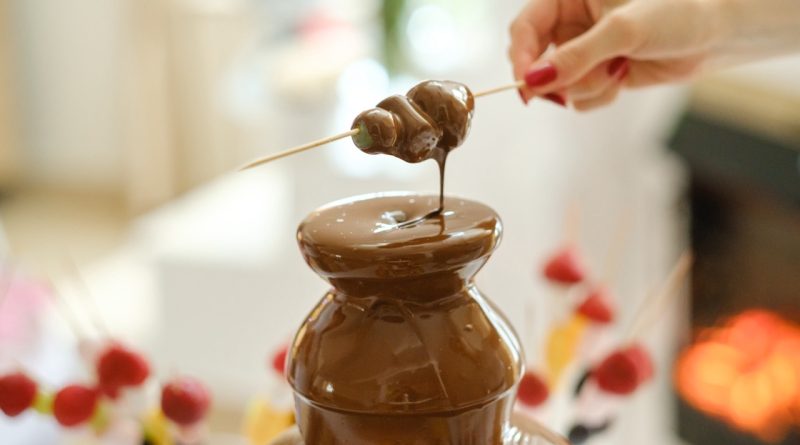What Temperature Should a Chocolate Fountain Be Set At?
Chocolate fountains are a delightful centerpiece for any gathering, captivating guests with their flowing streams of rich, melted chocolate. Yet, to achieve that dreamy flow, temperature plays a crucial role. Setting your chocolate fountain at the right temperature ensures not only a smooth and enjoyable experience but also maintains the integrity of the chocolate. In this article, we will explore the ideal temperature for chocolate fountains, why it matters, and some pro tips for achieving the perfect flow.
Finding the Sweet Spot: Ideal Temp for Chocolate Fountains
When it comes to chocolate fountains, the ideal temperature typically falls between 104°F to 120°F (40°C to 49°C). This range allows the chocolate to flow seamlessly without being too thick or too runny. If the temperature dips below 104°F, the chocolate can start to solidify, making it difficult for guests to dip their fruits, marshmallows, or pretzels into the fountain. On the other hand, exceeding 120°F can lead to burnt chocolate, ruining that rich, creamy texture we all love.
To achieve this sweet spot, many chocolate fountains come equipped with adjustable temperature settings. Whether you’re using a home model or a larger one for events, understanding the right temperature range can save you from a chocolate disaster. It’s essential to keep an eye on the temperature as it can fluctuate, especially if the fountain is in a cooler environment or if you’re using a lot of chocolate at once.
Checking the chocolate’s texture regularly is a good practice. When you scoop some chocolate out with a skewer or a spoon, it should flow back into the fountain smoothly without clumping. If you notice it’s getting thick, you might be straying away from that golden range. Keeping this in mind will help you maintain the perfect flow throughout your event.
Why Temperature Matters for Perfectly Melted Chocolate
Understanding why temperature matters is key to mastering your chocolate fountain. Chocolate is a temperamental ingredient; it loves the warmth but despises excessive heat. When chocolate is heated properly, its cocoa butter melts evenly, creating a glossy, velvety finish that enchants everyone who takes a dip. The right temperature maintains that luscious consistency, allowing the chocolate to cascade beautifully without clumping or seizing.
When the chocolate is too cold, it can become chunky and won’t flow properly, turning your fountain into a sad little puddle of disappointment. Conversely, if the temperature is too high, the chocolate can overheat, leading to an oily texture and a burnt taste. This not only affects the flavor but can also ruin the overall presentation. Remember, a chocolate fountain is as much about the look as it is about the taste!
Moreover, the right temperature ensures that the chocolate adheres properly to the items being dipped. Strawberries, marshmallows, and cookies will all benefit from that luscious, flowing chocolate, making each bite a delightful treat. So, keeping an eye on your fountain’s temperature is essential for both aesthetics and taste!
The Goldilocks Zone: Not Too Hot, Not Too Cold
Finding that perfect balance, or “Goldilocks Zone,” requires a little patience and practice. While the ideal temperature range is between 104°F to 120°F, it’s important to remember that not all chocolate is created equal. Different types of chocolate (dark, milk, or white) may require slightly different temperatures for optimal melting. For instance, white chocolate tends to melt at lower temperatures, so it may need a little extra care to avoid overheating.
One important tip is to start with your chocolate at room temperature before adding it to the fountain. This can help it reach the desired melting point faster and more evenly. Additionally, if you’re using chocolate chips or blocks, consider melting them down before pouring them into the fountain. This can help ensure a smoother flow and reduce the chance of clumps forming.
Also, be aware of the room temperature and humidity. A hot, humid environment can cause chocolate to melt faster, while a cooler room may require a bit more heat to keep things flowing smoothly. Adjusting for your specific conditions will help you stay in that Goldilocks Zone, ensuring your guests enjoy a delightful chocolate experience!
Tips for Adjusting Your Fountain’s Temperature Like a Pro
To master your chocolate fountain, you’ll want to follow a few pro tips for adjusting the temperature effectively. First and foremost, a good digital thermometer can be a lifesaver. Instead of guessing, keep a thermometer handy to monitor the chocolate’s temperature closely. This way, you can make adjustments as needed, ensuring that your chocolate is always in the ideal range.
Another helpful trick is to incorporate a little bit of vegetable oil or coconut oil into your chocolate. This not only enhances the flow but also helps in maintaining an even texture. Just be sure to use this sparingly, as too much oil can alter the chocolate’s taste. A little goes a long way in creating that smooth consistency that’ll have your guests coming back for more.
Lastly, don’t forget about the importance of stirring. Occasionally giving your fountain a gentle stir with a spatula can help distribute the heat evenly and keep clumps at bay. It’s a simple yet effective way to ensure your chocolate is flowing just right. Following these tips will help you adjust your fountain’s temperature like a pro, guaranteeing a fantastic chocolate experience for everyone!
In conclusion, mastering the temperature of your chocolate fountain is essential for a successful and delicious event. By finding that sweet spot and understanding the nuances of chocolate melting, you will ensure a delightful experience for your guests. With the right temperature, a little oil, and some gentle stirring, your chocolate fountain will flow like a dream, making your gathering unforgettable. So, go ahead and indulge in that velvety goodness — your chocolate fountain awaits!
